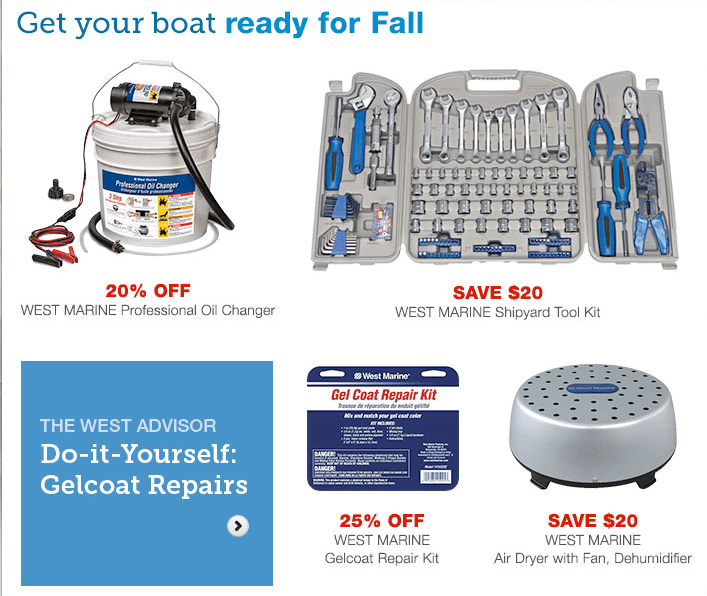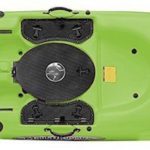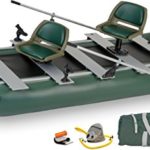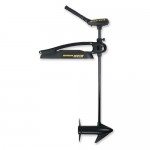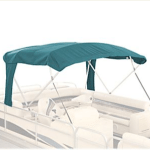If you’re new to learning the ins and outs of winterizing your boat you might have been told that getting a professional in to do the hard work is the best option. These services can often be costly and there’s no reason why you can’t winterize your boat yourself. Especially when you’re armed with the right information to keep your boat well protected. It may take you a day or two of hard work to get everything sorted, but once the boating season comes around again next season you’ll be pleased you took the time to prepare properly.
It’s important to know how to prepare your pontoon boat effectively and efficiently. Although there are a few steps which can be quite time consuming, the process is actually very simple and straightforward. Even if this is your first winter as a boat owner, you should have no trouble winterizing (and de-winterizing in Spring) your boat with these steps.
This article contains affiliate links. If you make a purchase after clicking on a link I may earn a small commission at no extra cost to you.
1. Correctly store your boat
Owners of sailing boats are often faced with an important decision each winter: store on the water, or in a dry dock. Pontoon owners don’t usually have to make such a difficult choice. Pontoons are, by nature, very lightweight and portable, which means there’s really no reason to store them on the water. If a boat can easily be moved to shore over the winter, then this is by far the better option. If you’re storing your boat outdoors, ensure you have a very tight-fitting cover to protect against the elements. There’s even a growing trend for pontoon owners to have their boats shrink-wrapped! The Transhield shrinkable pontoon cover is a reliable option.
Click here to buy your Transhield Shrinkable Pontoon Boat Cover
2. Clean the outside of your boat
Both the inside and the outside of your pontoon boat should be thoroughly cleaned before putting your boat away for the winter season. On the outside of the boat, barnacles are perhaps the main concern. You may have heard that barnacles don’t really cause much, if any, damage to a boat, and that’s correct. However, what these little creatures do is continue to grow in size the longer they’re on the boat, and as they grow they increase the pressure with which they stick to the surface. The longer you leave barnacles, the harder they are to remove, so try to get them all off before storing your boat. You can remove barnacles using a plastic or metal paint stripper, and a lime cleaner to remove the tricky husks.
3. Clean the inside of your boat
Make sure to give the inside of your pontoon a thorough cleaning, too, especially if you have any fabric or carpeted areas. Fortunately, this is very simple – a quick wash down is all you need, and a vacuuming of any soft furnishings to remove dust and dirt. Cleaning your boat shouldn’t take too long, but make sure you do this a few days before you plan to put your boat into storage, so that both the interior and exterior have plenty of time to dry out completely. The problem with storing your boat if it’s still slightly damp is that the moist conditions are the ideal breeding grounds for mold and mildew. The last thing you want on the first nice day of spring is to be outside wiping mold off your boat with bleach!
4. Remove & store your equipment
If any part of your pontoon is removable, remove it! Don’t make winterizing and de-winterizing your boat harder than it needs to be. Oars, seat cushions, and storage bags are some of the most obvious pieces of equipment that can be removed from a pontoon boat prior to storage, but use your own knowledge of your boat here to determine what equipment you have that could easily be removed. The reason for removing equipment? It’s less for you to have to worry about, and the less you have to worry about protecting over the cold winter months the better. Small items can be stored inside the home, in a garage, attic, or basement for example, which reduces the risk of them becoming damaged or corroded.
5. Care for your gas tank
Some pontoon owners prefer to leave their gas tanks reasonably empty over the winter, whereas others prefer to refill theirs before putting the boat into storage. Which is best? It all comes down to personal preference, although there are advantages to topping up the tank when winterizing your boat. The fuller the tank, the less air space, which can reduce the risk of evaporation and condensation, so it’s a good idea to have your tank at least 3/4 of the way to filled. Having gas in the tank also means you can use a stabilizer. What this does is stabilizes any unstable aromatic hydrocarbons in the fuel which are more likely to ‘go bad’. Although fuel won’t often go bad in such a short time frame, it’s not worth taking the risk.
6. Manage your engine
You care for your car engine, so why ignore your pontoon engine? The secret to how to winterize your pontoon boat engine is to treat it in much the same way you would your car engine, with antifreeze. Draining the coolant and adding antifreeze before the bad weather starts up can help to prevent corrosion, help to reduce the risk of lime buildup, and protects against freezing which could cause significant damage to your engine. So what’s the best method of adding antifreeze to your engine? Well, the ‘experts’ tend to differ in their advice, and you should always refer to the manufacturer’s instructions. However, as a general rule, a 50/50 mix of water and antifreeze should protect against temperatures as low as -30F.
The correct care and attention at the end of the season helps to prevent serious damage and corrosion, so that you’re all ready to de-winterize your boat and switch those trolling motors back on when that pleasant spring weather rolls around once more.
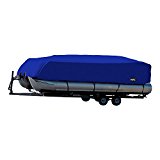 [If storing indoors, it’s also important to find a good-fitting cover to protect against dust, dirt and everyday household bugs
[If storing indoors, it’s also important to find a good-fitting cover to protect against dust, dirt and everyday household bugs
De-winterizing your boat
If you’ve properly prepared your pontoon, de-winterizing your boat should be a very quick and easy process. Ensure you add coolant to your engine, re-attach any necessary equipment, and reinstall your battery if you chose to remove it before storing (although this is not necessary if you stored your boat on shore). Caring for your boat can be a labor intensive and time intensive process at the end of the boating season, but now that you know how to winterize your pontoon boat, you should find that, come spring, your boat is ready and raring to get back out on the water!

